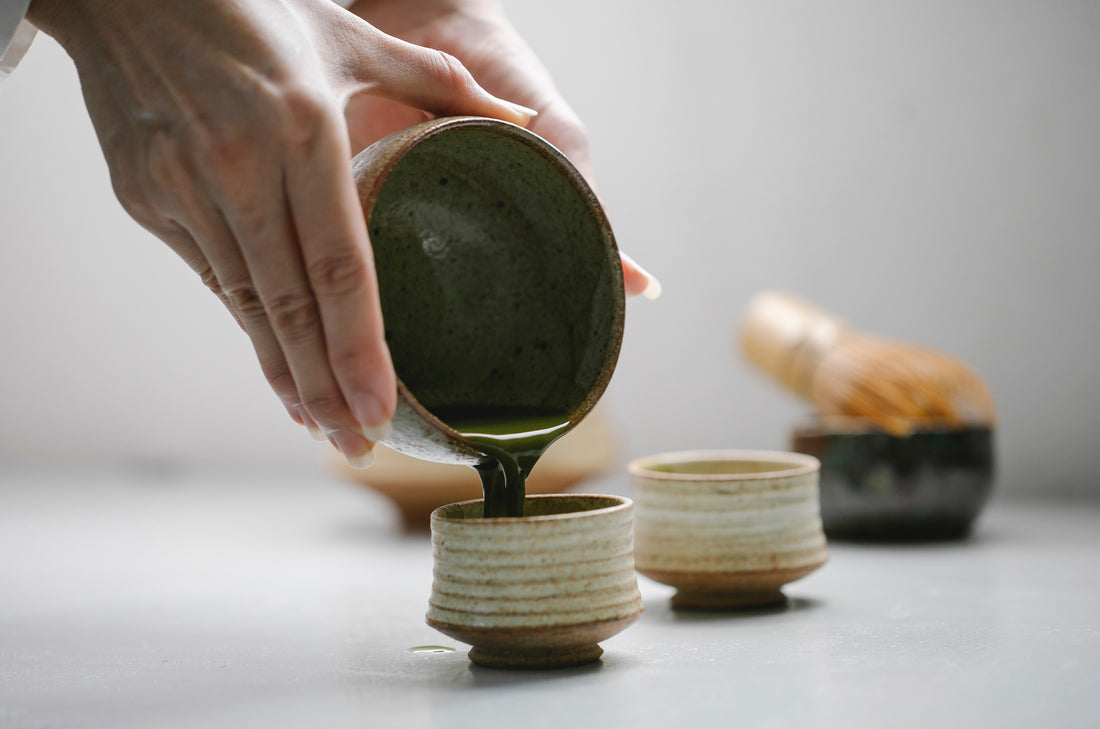Drinking tea in Japan has a long and interesting history. Tea was first introduced to Japan by China during the Heian Period. In the 13th century, tea became a symbol of power. At that time, Japan was governed by a feudal military system and tea was used by warriors to establish power and influence. Contests were held where warriors would guess which tea was of the highest quality, and whoever guessed correctly was declared the winner. By the 16th century, tea became very popular, and towards the end of the century tea masters came into being followed by the traditional tea room: Chashitsu.
What is the Tea Ceremony?
The Japanese tea ceremony is called Chanoyu, Sado, or simply Ocha in Japanese. It is a choreographed ritual of making and serving green tea (matcha). The movements of the ritual are extremely precise and use all of one’s attention. The process itself is not about tea, but the aesthetics and feelings of the performance. In the past, it was common practice to learn how to perform the ceremony at various schools throughout Japan. The ceremony is formulated around the main guests, Shokyaku. Every part of the process is considerate to the viewpoint of the guests.
The first documented tea celebration is found in a historical text that describes a Buddhist monk, Eichu, who served tea to the Emperor Saga, the Japanese ruler at that time.
During the 12th century, a monk named Eisai is credited with introducing the specific way of preparing tea and it’s key ingredient: powdered green tea. On a return trip to China, he brought a technique of preparing the drink by placing matcha into a bowl and adding hot water to mix the ingredients together.
The traditional tea ceremony is called "The Way of Tea". Sen no Rikyu was a Japanese Tea expert and is credited with the foundations for what we know of as The Way of Tea. He had the deepest influence on the three main schools of tea preparation that were founded following his teachings. The ceremony itself is very particular and even has different rules for summer and winter.
Chashitsu
The Tea Room, Chashitsu, is the room in which tea ceremonies are held. There aren't exact rules as to how the room is set up, but is should always contain tatami mats. Traditionally, there is a tokonoma (alcove) in the room but the size varies. Additionally, while there is no fixed layout, the guests' tatami mats should be placed next to the tokonoma so that it is not in the same corner as the host’s. This is, also, in respect to the guest, as the Tokonoma is the focal point of the room and is considered to be the most important place.




1 comment
I’ve learned so much from articles regarding the history of your country. Thank you so much for sharing please continue, I would love to purchase some of your items. I have to save up, I’m on a fixed income. I anticipate very article, thank you for the history of Japan.